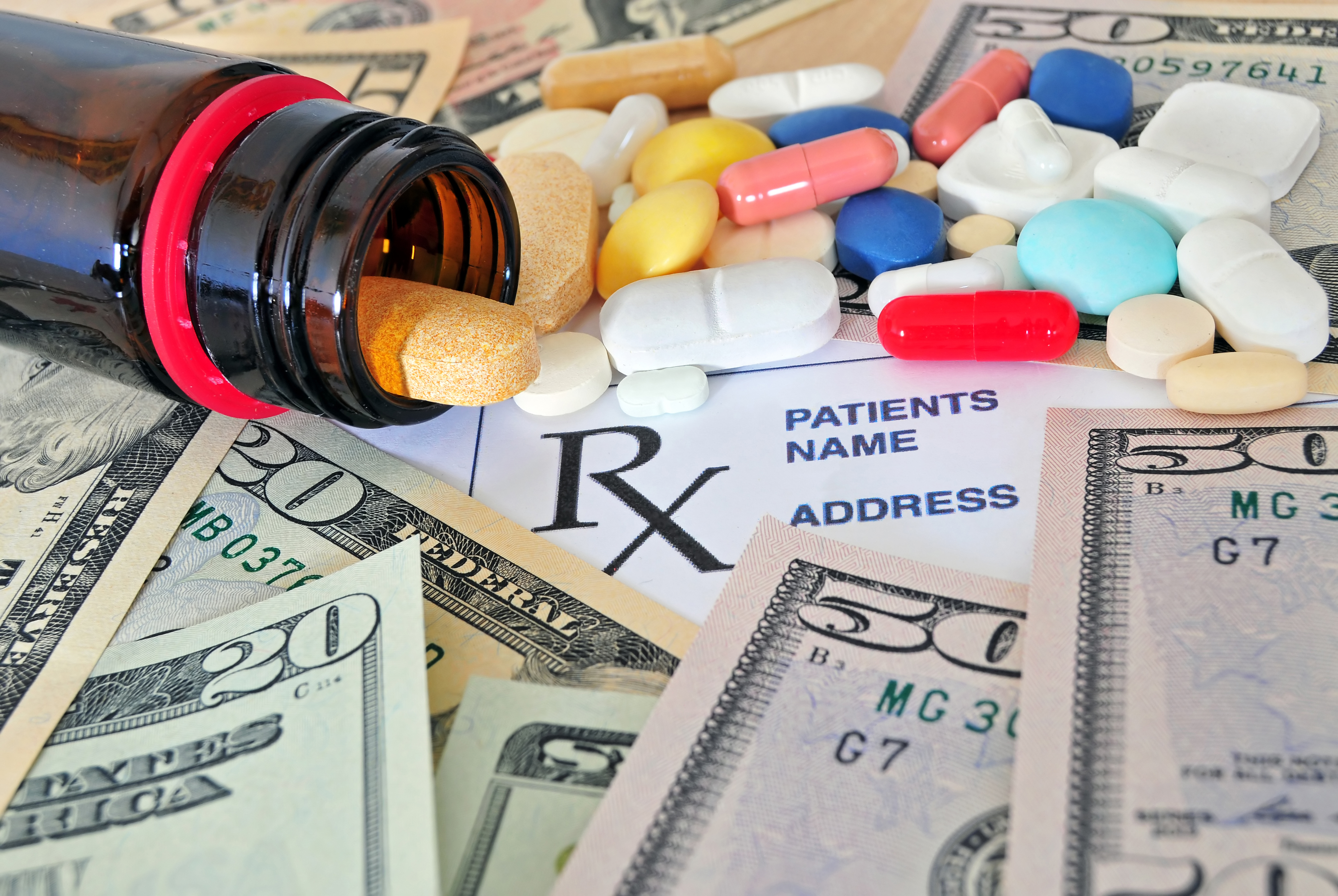AARP Hearing Center
How Congress Plans to Lower Drug Prices and Out-of-Pocket Costs
By Nancy A. LeaMond, November 10, 2021 04:09 PM

Americans are sick and tired of paying the highest prices in the world for their medications. Fortunately, the House of Representatives recently unveiled the text of the Build Back Better Act, which represents a huge step towards helping seniors afford the prescription drugs that they need. The bill will lower drug prices for millions of seniors by finally allowing Medicare to negotiate certain drug prices, penalizing drug companies that increase their prices faster than inflation, and adding a hard out-of-pocket cap to Medicare Part D.
Here’s a quick rundown of what consumers can expect and when:
2023:
Drug companies pay penalties for big price increases. Drug companies that increase the prices of their products faster than inflation must pay the higher-than-inflation amount back to the government. This provision will address brand name drug companies’ long-standing practice of increasing their prices year after year—often at more than twice the rate of inflation—and help reduce enrollee premiums and cost sharing.
$35 insulin copays under Medicare Part D. Starting in 2023, all Part D plans must limit cost-sharing to $35 or less for all of the insulin products that they cover. One-third of Medicare beneficiaries have diabetes, and over 3.3 million Medicare beneficiaries use one or more of the common forms of insulin.
$35 insulin copays for many private health plans. Health plans must limit cost-sharing to the smaller of $35 or 25% of the negotiated price for at least one of each dosage form (vial, pen) and insulin type (rapid-acting, short-acting, intermediate-acting, and long-acting). Almost 10 million Americans age 50 to 64 have diabetes.
2024:
Part D benefit redesign:
Medicare Part D covers most of the prescription drugs that you pick up at the pharmacy. In 2024, the program will undergo several changes that will help reduce enrollee out-of-pocket costs. The changes are also expected to encourage Part D plans to negotiate more aggressively with drug manufacturers.
| Medicare Part D coverage phase | Current standard benefit (2022) | Redesigned standard benefit |
| Deductible (Before you reach $480 in out-of-pocket spending) | Beneficiary: 100% | Beneficiary: 100% |
| Initial coverage (After you reach $480 in out-of-pocket spending and before your total medication costs reach $4,430) | Plan: 75% Beneficiary: 25% Drug Manufacturers: 0% | Brand name drugs: Plan: 67% Beneficiary: 23% Drug Manufacturers: 10% Generic drugs: Plan: 77% Beneficiary: 23% |
| Coverage gap (After your total medication costs reach $4,430 and before your out-of-pocket costs reach $7,050) | Brand name drugs: Plan: 5% Beneficiary: 25% Drug Manufacturers: 70% Generic drugs: Plan: 75% Beneficiary: 25% | Eliminated; same cost-sharing as initial coverage phase |
| Catastrophic coverage (After your out-of-pocket costs reach $7,050 under the current benefit structure or $2,000 under the new benefit structure) | Plan: 15% Beneficiary: 5% Medicare: 80% Drug Manufacturers: 0% | Brand name drugs: Plan: 60% Beneficiary: 0% Medicare: 20% Drug Manufacturers: 20% Generic drugs: Plan: 60% Beneficiary: 0% Medicare: 40% |
| Out-of-pocket limit | None | $2,000 |
$2,000 out-of-pocket cap under Medicare Part D. The original Part D benefit did not include an out-of-pocket cap. Enrollees that reach catastrophic coverage were still responsible for 5 percent of their prescription drug costs, with no limit. The new out-of-pocket cap will protect all Part D enrollees from high out-of-pocket costs, including the 1.2 million who spent more than $2,000 out-of-pocket in 2019.
Lower Part D enrollee costs after they meet their deductible. Previously, Medicare Part D enrollees were responsible for 25 percent of their prescription drug costs from the time they met their deductible until they reached catastrophic coverage. Starting in 2024, the enrollee share in this part of the benefit will drop to 23 percent.
No cost-sharing for vaccines: Starting in 2024, Medicare beneficiaries will no longer have to pay for Advisory Committee on Immunization Practices (ACIP)-recommended adult vaccines. Currently, some Part D enrollees face high-cost sharing for certain vaccines, including the shingles vaccine.
2025:
Medicare enrollees begin to benefit from medication negotiation with drug companies. The Department of Health and Human Services (HHS) will identify the 100 highest-spend prescription drugs under Medicare and choose a subset of drugs for price negotiation. Negotiations will start in 2023, and the new program will begin to provide the negotiated prices for selected Medicare Part D drugs in 2025 and Medicare Part B drugs in 2027. All of the selected drugs must be single source, meaning there is no generic or biosimilar competitor on the market. Drugs will only be eligible for the two-year negotiation process if the negotiated prices will not become available until it has been at least 9 (small molecule drugs) or 13 (biologic drugs) years since they were approved by the US Food & Drug Administration (FDA). Some high-spend drugs that currently do not meet these thresholds but might meet them by 2025 include Imbruvica (cancer), Jardiance (diabetes), and Breo Ellipta (COPD).
The negotiation process will include no more than 10 drugs in 2025, no more than 15 drugs in 2026 and 2027, and no more than 20 drugs in 2028 and beyond. This means that as many as 60 drugs could be selected and negotiated by 2028.
Medicare will also negotiate for all insulin products, regardless of when they were approved by the FDA.
The negotiation process includes a ceiling for drug prices that varies depending on when the drug was approved. For drugs that were approved 16 or more years ago, HHS will receive at least a 60 percent discount off the average manufacturer price. Meanwhile, drugs that were approved less than 12 years ago will receive at least a 25 percent discount.
Part D plans will be required to cover all negotiated drugs.
Overall, this process will create substantial savings for seniors and taxpayers by reducing the prices of a growing number of expensive and/or widely used prescription drugs.
Examples of prescription drugs that would currently qualify for negotiation
| Product name | Total 2019 spending | Total beneficiaries | Average spending per beneficiary | Indication |
| Eliquis | $7.3 billion | 2,168,729 | $3,369 | Atrial fibrillation |
| Revlimid | $4.7 billion | 42,215 | $110,711 | Cancer |
| Januvia | $3.6 billion | 938,165 | $3,769 | Diabetes |
| Symbicort | $2.0 billion | 1,103,477 | $1,827 | COPD |
| Humira Pen | $1.8 billion | 40,064 | $43,668 | Rheumatoid arthritis |
| Top insulins | ||||
| Lantus Solostar | $2.5 billion | 965,522 | $2,585 | Diabetes |
| Novolog Flexpen | $1.8 billion | 602,128 | $3,063 | Diabetes |
| Levemir Flextouch | $1.6 billion | 496,640 | $3,266 | Diabetes |
Monthly cost-sharing limits for Part D enrollees. Starting in 2025, Part D plans must offer enrollees the option of “smoothed” cost-sharing, which will allow them to spread their out-of-pocket costs over the course of the plan year. This mechanism will help protect enrollees from large out-of-pocket payments and potentially improve their ability to afford their prescription medications.
Other Important Provisions in Build Back Better: Notably, the prescription drug-related provisions are just part of the important health-related changes included in the Build Back Better Act. AARP also strongly supports the addition of a hearing benefit to the Medicare program, as well as critical investments made in home and community-based services so that more older Americans are able to choose how they live as they age. We also support the inclusion of paid leave, which will offer much-needed help to working family caregivers who are struggling to balance paid employment and caring for their loved ones. The bill also makes health coverage more affordable and accessible for millions of Americans aged 50 to 64. And finally, the bill makes a significant investment in housing, which is of critical importance to older adults who will benefit from the construction and repair of affordable and age-friendly housing options.
Overall, the Build Back Better Act includes numerous provisions to make historic improvements in the health and wellbeing of older Americans, particularly when it comes to affording prescription drugs.
































































